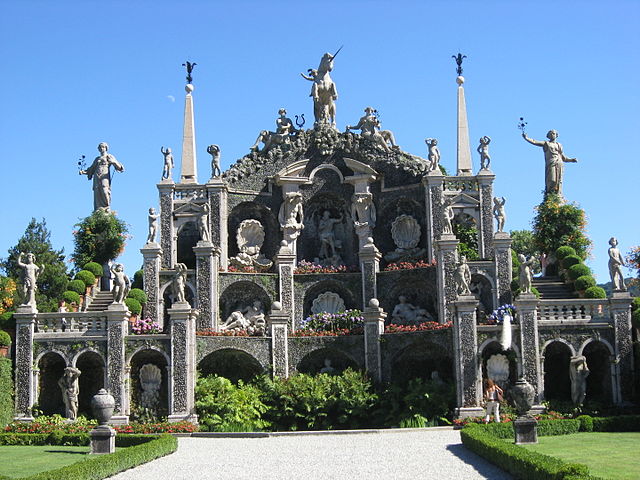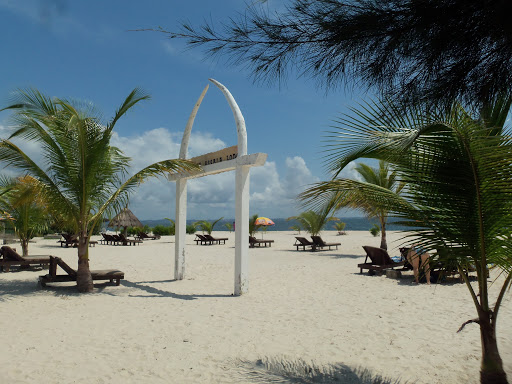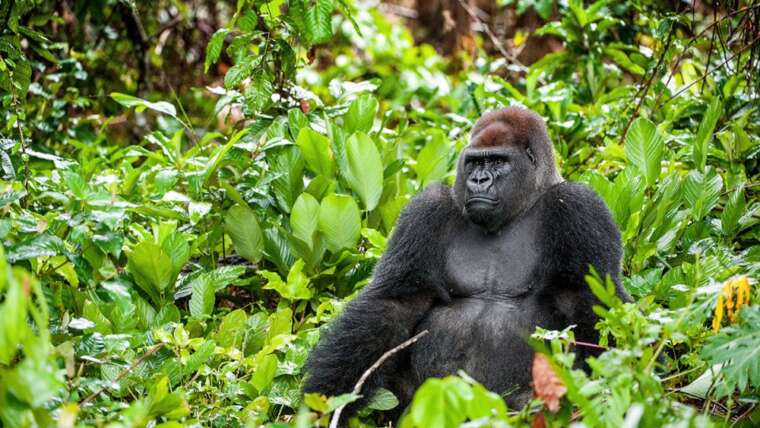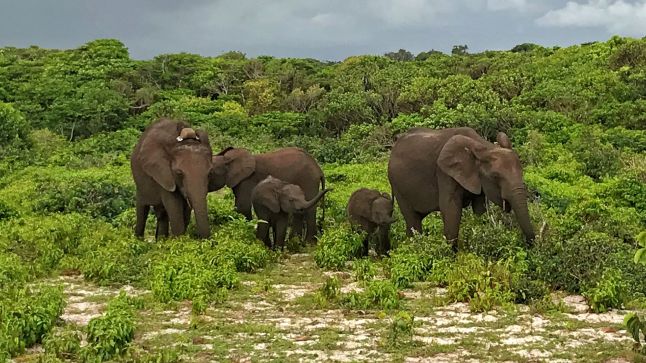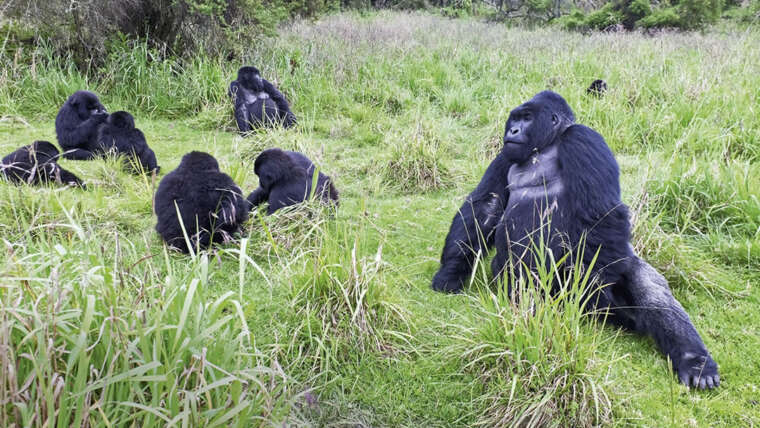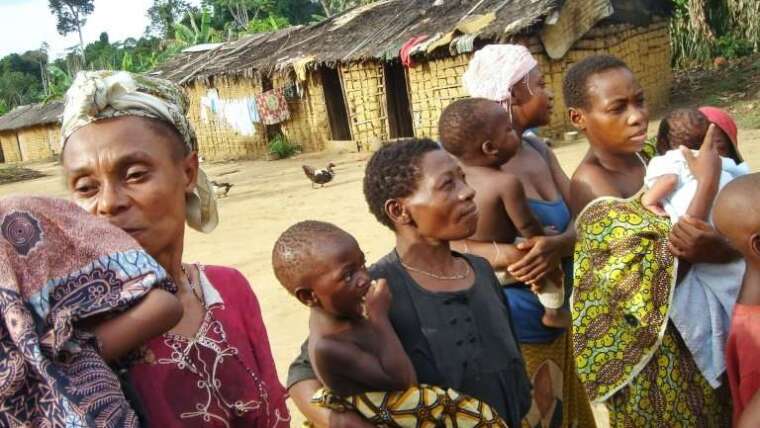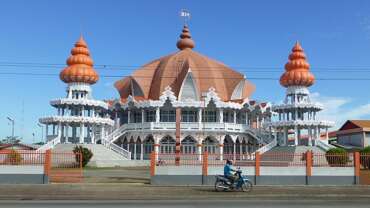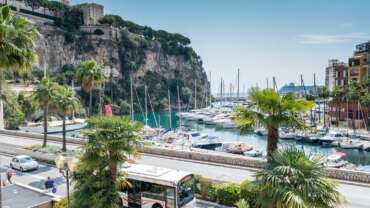Welcome to Gabon!
Gabon, a country along the Atlantic coast of Central Africa, has significant areas of protected parkland. The forested coastal terrain of its famed Loango National Park shelters a diversity of wildlife, from gorillas and hippos to whales. Lopé National Park consists of mostly rainforest. Akanda National Park is known for its mangroves and tidal beaches.
History of Gabon
Early Colonization
At the arrival of the first Portuguese navigators to Gabon in 1472, portions of southern Gabon were loosely linked to the state of Loango, which in turn formed a province of the vast Kongo kingdom to the south. From the offshore islands of Sao Tome and Principe, where the Portuguese established sugar plantations, they developed trade with the mainland. From the late 1500s, Dutch, French, Spanish, and English competitors also exchanged cloth, iron goods, firearms, and alcoholic beverages for hardwoods, ivory, and a few slaves.
The slave trade achieved extensive development only between the 1760s and 1840s, as a result of heightened demand from Brazil and Cuba. Interior peoples sent undesirables from their own societies and captives from warfare down the waterways to the coast, where they were collected in barracoons (temporary enclosures) to await the arrival of European ships. The Orungu clans at Cape Lopez organized a kingdom whose power rested on control of the slave trade through the mouths of the Ogooué River. The Mpongwe clans of the estuary, who were already important traders, also profited from the slave trade, as did the Vili of Loango, whose activities extended throughout southern Gabon. Only the Fang, who were migrating southward from Cameroon into the forests north of the Ogooué, ordinarily refused to hold slaves or engage in warfare to obtain them. The coastward migrations of the numerous and often warlike Fang nevertheless contributed to the further decimation and dispersion of many interior peoples, particularly during the 19th century.
French control
By 1800 the British were becoming the leading traders in manufactures throughout the Gulf of Guinea. After 1815 the French sought to compete more actively in the commercial sphere and to join Britain in combating the slave trade. To these ends, Capt. Édouard Bouët-Willaumez negotiated treaties with the heads of two Mpongwe clans, King Denis (Antchouwe Kowe Rapontchombo) on the southern bank of the estuary in 1839 and King Louis (Anguile Dowe) on the northern bank in 1841. They agreed to end the slave trade and to accept French sovereignty over their lands. The arrival of American Protestant missionaries on the northern bank in May 1842 to open a school in the lands of King Glass (R’Ogouarowe)—the centre of British, American, and German commercial activity—spurred the French to establish Fort d’Aumale within the territory of King Louis in 1843. In 1844 France brought in Roman Catholic missionaries to promote French cultural influence among the Mpongwe and neighbouring peoples. French agents obtained a treaty from King Glass, recognizing French sovereignty. In 1849 Bouët-Willaumez organized a small settlement of mainly Vili freed slaves called Libreville (“Free Town”), which, combined with the fort, formed the nucleus of the capital.
During the 1850s and ’60s the French gradually extended their control along the adjacent coast and sent explorers into the interior. The expeditions of Pierre Savorgnan de Brazza between 1875 and 1885 established French authority on the upper Ogooué, where Franceville was founded in 1880, and on the Loango coast. An enlarged Gabon was attached to the French Congo in 1886 under Brazza as governor.
In 1910 Gabon became one of the four colonies within the federation of French Equatorial Africa. The French delimited the frontier with the Germans in Cameroon in 1885 and with the Spanish in Río Muni, or Spanish Guinea (later Equatorial Guinea), in 1900. French occupation of the Gabon interior brought little opposition, but interference with trade and such exactions as head taxes, labour taxes for public projects, and forced labour provoked considerable resistance, as did the French policy from 1898 to 1914 of developing the economy through monopolistic concessionary companies, which devastated settlement, agricultural production, and trade.
In the period between the two world wars, a pro-French but anticolonialist elite was created, mainly from the graduates of the boys’ schools of the Brothers of Saint-Gabriel at Libreville and Lambaréné. From their ranks came most of the politicians who held office during the Fourth French Republic (1946–58), when Gabon became an overseas territory with its own assembly and representation in the French Parliament. During this era France considerably expanded public investment in the economy, health care, and education. In 1958 Gabon became an autonomous republic within the French Community and, after concluding cooperation agreements with France, achieved independence on Aug. 17, 1960.
Gabon since independence
Gabon favoured close relations with France and the continued use of French language and culture. It opposed political ties with the other states of sub-Saharan Africa, however, because of dissatisfaction with the previous federation and a desire to develop its natural resources for its own benefit.
Attempts by the republic’s first president, Léon M’ba, to institute a single-party regime provoked a rebellion by young military officers in February 1964. But M’ba, who had strong backing from French economic interests, was restored to power by French forces sent on orders from Pres. Charles de Gaulle. The intervention made possible the rise of Albert-Bernard (later Omar) Bongo to the presidency after M’ba’s death in 1967 and the establishment of a single-party regime in the following year, the only party being Bongo’s Gabonese Democratic Party (Parti Démocratique Gabonais; PDG). Under the single-party regime, Bongo was elected to the presidency in 1973 and was reelected in 1979. In 1982 a new opposition group, the Movement for National Renewal (Mouvement de Redressement National), called for multiparty democracy, exercise of civil liberties, and an end to governmental corruption, but it was quickly suppressed; Bongo was again reelected in 1986.
In the mid-1980s, declining petroleum prices caused an economic downturn. Austerity measures imposed by the government led to antigovernment demonstrations in Libreville and Port-Gentil in early 1990. This unrest led to the creation in March of a national conference, which included opposition groups, to discuss political reform. As a result, constitutional amendments adopted in May restored the multiparty system. That same month the death of an opposition leader under mysterious circumstances sparked violent disorders that led to French military intervention at Port-Gentil to protect French nationals and their property. Order was restored, and implementation of the plans for political reform continued. Legislative elections were held in the fall, and, although opposition parties won seats in the new legislative assembly, electoral irregularities allowed the PDG to retain a small majority. The following year a new constitution was promulgated in March.
After the restoration of a multiparty democracy, Bongo was reelected in 1993 and 1998, although both elections were clouded with allegations of fraud. A constitutional amendment passed in 2003 removed presidential term limits and allowed Bongo to stand in the 2005 election, which he also won. In general, the PDG was equally successful during the 1990s and 2000s in legislative and most local elections. However, the PDG’s overall grip on power was briefly threatened by popular dissatisfaction following the December 1993 presidential election and a subsequent 50 percent devaluation of the currency in January 1994, which sparked protests in several cities, during which three dozen people were killed and scores injured. After the demonstrations were suppressed, the government granted modest salary increases and placed controls on soaring prices of largely imported basic commodities.
Many of Gabon’s financial problems resulted from protracted and large-scale corruption among government officials and business leaders. Although this group comprised just 2 percent of the population, they came to control some 80 percent of all personal income. In addition to receiving large salaries, they diverted funds from public works and services, as well as the income from at least one-fourth of the oil sales, and transferred vast sums of money to foreign accounts. To counteract this financial drain, the government borrowed money, and by the late 1990s debt service constituted some two-fifths of the national budget. The government turned regularly to France for funds and for help in canceling and rescheduling debts. By the late 1990s Gabon was under pressure from the International Monetary Fund to privatize state corporations and to eliminate the diversion of state funds, which the country was able to show some progress with during the 2000s. Gabon was able to reschedule a significant amount of debt in 2004.
In 2009 rumours persisted that Bongo was not in good health, particularly in May, when he suspended his presidential duties for the first time since he took office in 1967 and checked into a clinic in Spain—ostensibly to rest and mourn the death of his wife, who had passed away in March. Initial reports of his death on June 7, 2009, were denied by the Gabon government; an official announcement the next day indicated he died on June 8. Senate president Rose Francine Rogombé was sworn in as interim president two days later, and an election was scheduled for August 30. More than 20 candidates initially announced their intent to stand in the election, including Bongo’s son, defense minister Ali Ben Bongo, who was selected to be the PDG’s candidate. After a slight delay in the release of the election results and amid allegations of fraud and voting irregularities, Bongo was declared the winner with slightly more than two-fifths of the vote. Because of the allegations of electoral misconduct, many opposition members protested the declaration of Bongo’s victory and held demonstrations in several cities throughout the country, some of which turned violent as protesters clashed with Gabonese security officials. Opposition groups requested a recount, the results of which were announced in October and upheld Bongo’s win. He was inaugurated on October 16, 2009.
While in office, Bongo made efforts to diversify Gabon’s economy and build much needed social and economic infrastructure. Economic inequality persisted, however: some one-third of the population lived below the poverty line, leading to general discontent. Internationally, Bongo gained recognition and accolades for his strides in conservation and wildlife protection.
Gabon’s next presidential election was held in August 2016. Of all the candidates Bongo faced in the August 27 contest, his strongest challenger was Jean Ping, a former diplomat who had served as president of the UN General Assembly and as chair of the African Union Commission. Prior to the election, several opposition groups opted not to field their own candidate and instead supported Ping’s candidacy. The election was criticized by international observers as lacking transparency, and a delay in the release of the results had the country on edge. Bongo was declared the winner with 49.8 percent of the vote, just narrowly beating Ping, who reportedly received 48.2 percent. Many questioned the reported voter turnout in Bongo’s home province, which was allegedly more than 99 percent, compared with a nationwide turnout of less than 60 percent. Protesters demonstrated against Bongo’s alleged victory, even setting fire to the country’s parliament building in Libreville, and there were calls from within the country as well as from the international community for the electoral commission to release the results of all the polling stations.
In September Ping filed a case with the Constitutional Court, challenging the results of the election. Two weeks later the court ruled to uphold Bongo’s victory. As part of the ruling, it cancelled the results from 21 polling stations, which served to increase the president’s lead over Ping; the final result was 50.66 percent for Bongo and 47.24 percent for Ping. Against the backdrop of Ping rejecting the court’s ruling and the international community expressing concern over the proceedings, Bongo was hastily sworn in for his second term on September 27, 2016.
The status of Bongo’s health came under heavy speculation beginning in October 2018, after he became ill and was hospitalized while attending an event outside the country. The government cited fatigue as the reason Bongo was receiving medical treatment abroad, but rumours that he had suffered a stroke persisted and were later confirmed; there were also some erroneous reports that he had died. As weeks passed, his extended absence and the secrecy surrounding his health ignited a controversy over who was, or should be, leading the country, as the constitution stated that in the event that the president was incapacitated, the president of the Senate would serve as interim president while organizing new elections within 60 days. Even more controversy was generated by the manner in which the Constitutional Court addressed the question: in November the court itself amended the constitution to allow the vice president or prime minister to step in and temporarily handle the president’s duties, a move that was criticized by opposition leaders and others as being illegal and unconstitutional.
While Bongo was still recuperating abroad, a small group of soldiers staged a coup on January 7, 2019. It was quickly put down the same day, however, as it appeared that Bongo still had the support of the majority of the military.
People of Gabon
Ethnic groups and languages
Except for a few thousand Pygmies, Gabon’s 40 or so peoples speak Bantu languages that are classified into 10 linguistic groups. The Myene group (including the Mpongwe and Orungu), though only a relatively small part of the population today, has played an important role in the history of the country as a result of its location along the northern coasts. The Fang, also found in southern Cameroon and Equatorial Guinea, account for more than one-fourth of the population and live north of the Ogooué River. The largest groups south of the Ogooué are the Sira (including the Punu), the Nzebi, and the Mbete, who together form about one-third of the population. Less-numerous peoples include the Benga and Seke in the far northwest, the Kota and Teke in the east, and the Vili along the far southern coast.
Many of the Bantu languages do not have written forms. During the 19th century, Christian missionaries transliterated several of them into the Latin alphabet and prepared Bible translations and catechisms for their followers. But the French policy of limiting the use of indigenous languages solely to religious instruction inhibited the growth of other types of literature. Because of the extensive efforts to teach French, nearly all adult Gabonese can speak the language, and almost three-fourths can read it.
Religion
A large majority of Gabon’s population is Christian, of which Roman Catholics account for more than two-fifths. Though Gabonese serve as Catholic bishops, they rely heavily on foreign clergy, particularly the French Holy Ghost Fathers. The largest Protestant body, the Evangelical Church of Gabon, has Gabonese pastors in its parishes throughout the north. Other Christian churches include the Christian Alliance church, generally found in the southwest and in coastal cities, and the Evangelical Pentecostal church (Assembly of God) and Adventist church, both found in the estuary and far northern regions. A small segment of the country’s population is Muslim. Adherents of traditional religions also account for a small segment of the population, but that does not include Christians and Muslims who also follow some traditional beliefs and practices. A syncretic religion called Bwiti (based on an earlier secret society of the same name) came into existence in the early 20th century and later played a role in promoting solidarity among the Fang.
General Information of Gabon
Cultural Life
The French influence on Gabonese culture is prevalent. Gabon’s contemporary writers express themselves almost exclusively in French. At the same time, there has been continued interest in Gabon’s precolonial history and traditions, and much research continues on the Fang epic (mvet) and the art of the Mpongwe, Fang, and Kota. In 1983 the International Centre for Bantu Civilizations was created, with its headquarters at Libreville. The National Museum of Arts and Traditions is also in Libreville.
Health and welfare
Health facilities remain inadequate, particularly outside the Libreville area, despite improvements since the 1970s. The government provides nearly all health care services. The internationally known hospital operated by Albert Schweitzer from 1924 to 1965 and now named after him is located in Lambaréné. Malaria, sleeping sickness, tuberculosis, and other infectious diseases are widespread problems. HIV/AIDS is also a growing problem in Gabon, as the prevalence rate has increased since the early 1990s.
Education
Gabon’s educational system continues to be modeled closely on that of France. French remains the sole medium of instruction; Bantu languages are studied as electives at the secondary and higher levels. Education is officially mandatory from ages 6 to 16. Primary education lasts for six years, and secondary education consists of a four-year cycle followed by a three-year cycle. Institutes of higher education include Omar Bongo University (1970) in Libreville, which has programs in most fields and some advanced studies; the University of Health Sciences (2002), also in Libreville; and the University of Science and Technology of Masuku (1986), located near Franceville. Many Gabonese study abroad, particularly in France, at the university and graduate levels.
Almost three-fourths of the adult population is literate, which is similar to the regional average and slightly lower than the world average.
Cristal Mountain!
The Monts de Cristal, virgin and unspoilt
One of the least accessible to humans parks, National Park Crystal Mountains, withan area of 1,200 km2, consists of large blocks of rainforest with reliefs from 200 to over 900 meters. At altitude, clouds and mists, almost constant, create favorable conditions for the development of plants eager to moisture, such as orchids. There are even plants that have still not been identified. Crystal Mountains are considered by many botanists as having the greatest plant diversity throughout Africa.
These mountains are also home to a unique diversity of rare and colorful butterflies. The number of butterflies species is one of the highest in Africa. But the Crystal Mountains are not the property of the smallest. Large charismatic mammals such as mandrills and elephants also live there.
In fact, the park is known internationally for its biological richness and we invite you to discover this special place.



